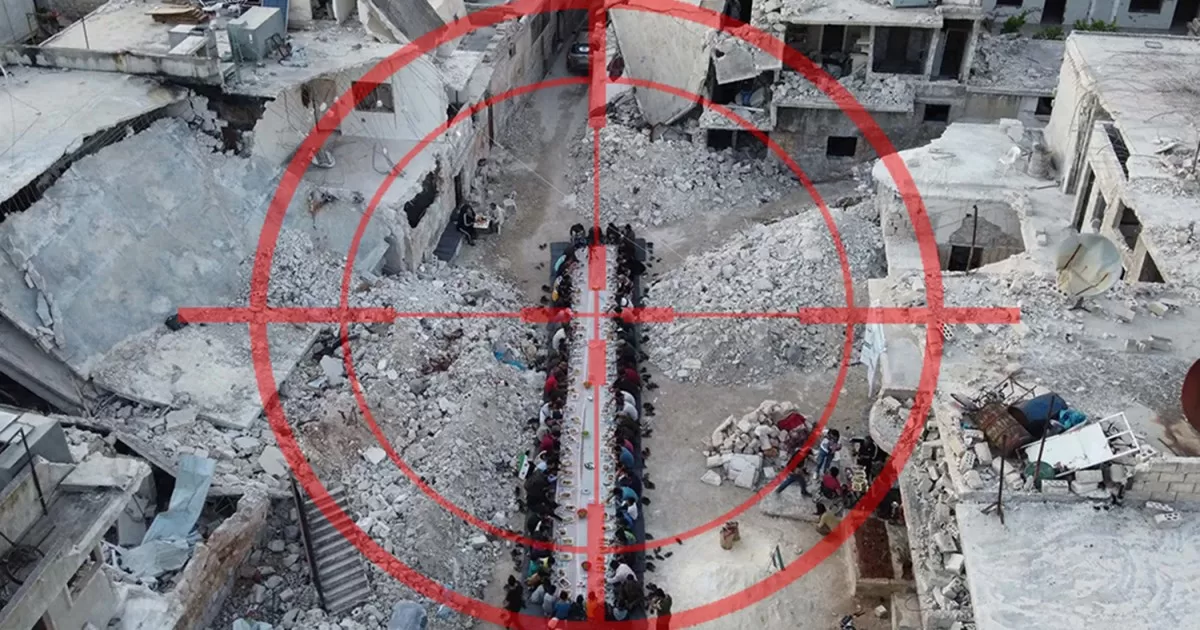The White Helmets, formally known as the Syrian Civil Defence, says there were 13 drone attacks this year up to February 22, which injured seven people, including two children.
FPV drones are classified as loitering munitions for their ability to hover near a target until it is time to strike. They are relatively cheap to make and offer a high degree of accuracy in their hits.
Attacking civilians
Munir Mustafa, deputy director of the White Helmets, said the use of FPV drones by the Syrian forces, as well as Russian and Iranian allies, against civilians is a dangerous escalation, threatening lives and destroying livelihoods.
“These attacks are not limited to direct loss of life and property damage, but also extend to targeting agricultural areas and the Qarqur Dam area, which threatens the livelihoods of many many families,” he said.
“These deliberate attacks will exacerbate food insecurity and further hinder access to basic services, worsening the challenges faced by communities already devastated by 13 years of war,” Mustafa added.
The state of panic and terror that such attacks create among the people being targeted is likely to escalate and push already vulnerable communities – some who have been displaced already – to flee.
The Syrian Network for Human Rights has said with its drone attacks, the Syrian government is violating the United Nations Security Council Resolutions 2139 and 2254 and international humanitarian law regarding the distinction between civilians and fighters.
“As has been the custom for 13 years, targeting civilians is the Assad regime’s primary objective,” Abu Amin, who monitors Syrian and Russian military and warplanes to warn civilians in Idlib of incoming attacks, told Al Jazeera.
Local production under Iranian-Russian supervision
FPV drones give the operator the advantage of an aerial view that is transmitted from the camera mounted on the aircraft to virtual reality goggles or a portable monitor.
A new option for using FPV drones to destroy terrorists in Idlib and beyond. As I said, the rats now have nowhere to hide. While Syrian and Russian warplanes aren’t striking, FPV drones are reaping a bloody harvest. pic.twitter.com/6uioUDAcXP
— Hamdy Arnous (@JHArnous) February 10, 2024
The use of such drones has risen recently in the Russian war on Ukraine. And in Syria, military sources say, government forces make as many of the aircraft as possible domestically and use different technologies but, ultimately, the objective is the same.
“The FPV suicide drones used by Assad regime forces are manufactured in research labs south of Hama under the supervision of both Russian and Iranian forces,” said Abu Amin.
Abu Amin believes that, in the coming days, the Syrian government forces will use more suicide drones as they improve the technology and train more operators to fly them.
“The military units responsible for the drones are the 25th Division, supported by Russia, and the Republican Guard, supported by Iran,” he said.
The drones, Abu Amin explained, can carry about 2kg (4.4 pounds) of explosives and have a control range of about 3.5km (2 miles) at an altitude of no more than 30 metres (100 feet).
High-precision, low cost
Iranian militias installed a main system for suicide drones at Hama airport as well as two affiliated points in Maarat al-Numan in Idlib countryside and the Ghab Plain, Colonel Mustafa Bakour, a defecting Syrian officer who is now a leader in the Syrian opposition forces, told Al Jazeera.
Since the systems were put in place several months ago, he added, testing of the drones and training of the operators began.
“These drones have high accuracy and low cost compared to other types of weapons, such as warplanes, artillery, and missiles,” Bakour said. “They have good destructive power, especially if the hit is accurate.”
The attacks so far, Mustafa said, have been along the front lines between government and opposition forces, hitting “the Qarqur Dam area in northern Hama countryside, the villages of Afs and Maaret Elnaasan in western Idlib countryside, and Kafr Amma in western Aleppo countryside”.
From the Syrian Arab Army
strikes with FPV drones in Idlib in recent weeks and months and the elimination of dozens of HTS terrorists, … Just watch, we see you
pic.twitter.com/UJQo9a46cU
— SAM
(@SAMSyria0) February 15, 2024
Suicide drones are not new in Syria’s war, Bakour said, adding that they have been used by Russia since its direct intervention in Syria in 2016, but in a limited manner.
Opinions have varied on which of the Syrian government’s foreign backers – Iran or Russia – are guiding this increased use of suicide drones, with Bakour believing strongly that it is Iran that is providing them and training Syrian soldiers to operate them.
